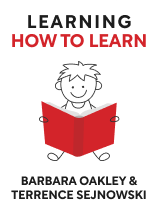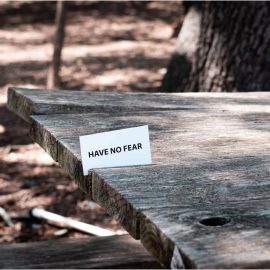

This article is an excerpt from the Shortform book guide to "Learning How to Learn" by Barbara Oakley and Terrence Sejnowski. Shortform has the world's best summaries and analyses of books you should be reading.
Like this article? Sign up for a free trial here .
Do you know how to learn effectively? What are some practical study habits you can use to learn more?
In their book Learning How to Learn, Oakley and Sejnowski explain how neural pathways are created in your brain. Then they suggest four learning strategies that take advantage of the way your brain stores information: embracing a multisensory learning style, making up metaphors, skimming books first, and diversifying your studies.
Keep reading for details on these strategies.
Maximize Your Learning by Strengthening Your Synapses
As you think, brain cells called neurons make connections with each other, creating a neural pattern or pathway that represents the information in your brain. The connections between the neurons that make up this pathway are called synapses. The more synapses a certain idea produces in your brain, the better you’ll learn it, because it’s connected to more different neurons, giving your brain more neural pathways it can use to retrieve it. Let’s explore the authors’ tips for using the process of synapse formation to maximize your learning.
Tip #1: Embrace a Multisensory Learning Style
Oakley and Sejnowski’s first tip for how to learn effectively by building more connections is to embrace multisensory learning because the more senses you engage in learning something, the better you’ll learn it. Depending on your preferred learning style, you might learn something better if it’s presented visually, rather than verbally, or vice versa. But regardless of your learning style, you’ll learn it even better if you see it and hear it than if you only receive it in one style.
The reason for this, as Oakley and Sejnowski explain, is that connecting an idea to inputs from more senses creates more synaptic connections in more neural pathways in the brain. This makes it easier to learn and remember because there are more neural pathways your brain can use to retrieve the idea.
| Connecting Your Brain In The Whole Brain Child, neuroscientist Dan Siegel and parenting coach Tina Bryson extend the concept of multisensory learning in two ways: First, they generalize “senses” to thoughts and perceptions that aren’t just sensory (like emotion and logic). Whenever applicable, try to “feel” what you’re learning about emotionally as well as tactilely. Try to “see” its logical makeup as well as its appearance. Incorporating these additional senses will create more synaptic connections, which will strengthen your learning even more. Second, they emphasize the importance of making mental connections between different thoughts that are processed in different parts of the brain (like different senses, emotions, and analytical thoughts) as a way to improve your mental health as a whole, not just to learn a given subject. The more your synapses connect different parts of your brain, the more easily you can access your whole brain and harness all its capabilities. This helps you control your emotions and relate to other people, in addition to helping you learn more easily. |
Tip #2: Make Up Metaphors
Another tip for how to learn effectively that Oakley and Sejnowski provide is that you can more easily add things to your memory by relating them to things already in your memory through metaphors. Again, this is because your thoughts are based on neural connections. Connecting a new chain of synapses to an existing one makes the new one easier to retrieve.
The authors emphasize a number of key techniques for making your metaphors as memorable as possible, which we’ll discuss in turn. First and foremost, they recommend you create mental pictures to represent the concept you’re learning, especially if the concept isn’t visual to begin with. Pictures are easier to commit to memory than abstract facts like numbers and dates. So if you can link a new fact to a mental picture, you not only create more neural connections, but you connect it to something (namely the picture) that’s easy to retrieve from memory.
(Shortform note: We might infer that pictures are more memorable because they provide more neural connections, and they provide more connections because they take more neurons to store and process. According to John Medina, author of Brain Rules, about 50% of all your brain’s neurons are devoted to processing visual information—a testament to the dominance of our sense of vision over our other senses.)
The authors also note that you can use acronyms or mnemonics to create metaphors, and you can make your metaphors even more memorable if you make them humorous. (Shortform note: Although there is extensive research demonstrating that funny ideas are more memorable, scientists have yet to explain why humor is easier to remember.)
For example, if you’re trying to memorize the biological taxonomy, you could come up with the mnemonic sentence “King Phillip cleaned orange fungus off Jenny’s spectacles,” where King = kingdom, Phillip = phylum, cleaned = class, orange = order, Jenny = genus, spectacles = species. This connects the abstract taxonomy to a scene you can visualize. Then, to make it even more memorable, you add more sensory detail and humor: What does the fungus smell like? Why did Jenny have orange fungus on her spectacles? (There could be a comical backstory behind that.)
| Use the Power of Metaphors Wisely Tony Robbins, author of Awaken the Giant Within discusses how metaphors not only have the power to make ideas more memorable, but to shape your perception of the ideas themselves. He says that if you analyze the metaphors you (or others around you) use and change them to be more accurate or more positive, you can improve your understanding of the subject or your attitude toward it. For example, scientists used to visualize atoms as microscopic solar systems, with electrons orbiting the atomic nucleus like planets orbiting the sun. But this metaphor subconsciously constrained them to think of electrons traveling in circular orbits like planets, which turned out not to be the case; instead, electron orbits can take a variety of shapes, depending on the number of electrons in the atom and their energy level. To advance their understanding of atomic structure, scientists had to move away from the solar system metaphor—instead, they now visualize electron orbits more like standing waves. |
Tip #3: Skim Books First
As another tip for how to learn effectively, when you read a book (or an article, a chapter, or any other reading assignment), Oakley and Sejnowski recommend that you first skim through it, looking at headings and pictures to get a general sense of what it’s about before you read it in detail. This helps you absorb the material better because, as we’ve discussed, it’s easier to embed something in your memory (like the details of the book) if you relate it to something that’s already there (the information you got from skimming).
(Shortform note: For this reason, most speed reading courses teach you to skim a book before you read it in detail. Even before scientists understood the neurological basis, 20th-century philosopher Mortimer Adler presented skimming as a way to understand the crux of a book within 15 minutes and better remember what you read in How to Read a Book.)
Tip #4: Diversify Your Studies
Oakley and Sejnowski’s final tip on how to take advantage of your brain’s information storage processes is to introduce variety into your studies. Just like taking a multisensory approach or making up metaphors, diversifying your studies connects what you’re learning to more neural pathways in the brain, which helps you learn it better by building more synapse connections. The authors explore three separate ways to introduce variety into your studies.
Study in a Variety of Locations
According to Oakley and Sejnowski, if you always study a certain subject in the same place, your brain may make neural connections between that subject and that place. These connections make it harder to recall what you studied when you’re in a different setting (for example, if you only ever study in your bedroom, you might struggle to recall the information at a testing center). By studying a subject in a variety of environments, you ensure that your brain doesn’t associate the subject with any particular environment. That way, you’ll be able to recall the information no matter where you are rather than only remembering it when you’re in a certain place.
| Make Ideas Stand Out From Your Surroundings Oakley and Sejnowski don’t specify if there are particular settings that are more effective in enhancing memory, but other research addresses this issue. One psychological study showed that objects that seem out of place in a given setting are more likely to be remembered than objects that fit the setting. To take advantage of this fact, try studying something in a location where you wouldn’t normally encounter it to strengthen your memory of it as much as possible. For example, if you normally study math in the library and wouldn’t normally think of using math out in the woods, try taking a hike with your math book and practicing your calculations in the great outdoors. |
Interleave Your Study Problems
Interleaving is yet another way to add diversity to your studies. The authors recommend “interleaving.” This is practicing a variety of problems that cover all of the problem-solving methods you’ve learned, as opposed to practicing one method at a time. Let’s say that you’re learning arithmetic. You’ve learned how to add and subtract, and now you’re learning how to multiply. When studying, you practice some addition and subtraction problems along with your multiplication problems.
Study Something Different for a Change
Oakley and Sejnowski warn that once you become an expert in a certain field of study, it’s easy to get stuck in a rut, where you can’t come up with any new insights. To combat this, they recommend studying a completely different subject for a while. That way, you’ll naturally relate the new concepts that you learn back to what you already know, giving you new insights.
(Shortform note: Other authors, such as Ozan Varol, refer to the practice of combining or connecting dissimilar ideas to advance your learning as “combinatory play.” Many successful people make use of combinatory play. For example, Pixar co-founder Ed Catmull set up a program called “Pixar University” that enables Pixar employees to take classes in subjects like sculpting or juggling that would normally be considered outside the scope of their work. Exploring new subjects leads to more creative insights that enhance their work.)

———End of Preview———
Like what you just read? Read the rest of the world's best book summary and analysis of Barbara Oakley and Terrence Sejnowski's "Learning How to Learn" at Shortform .
Here's what you'll find in our full Learning How to Learn summary :
- How anyone can learn to master any subject
- Study tactics that you can use to excel in whatever you’re learning
- A look at the neuroscience behind how you learn






